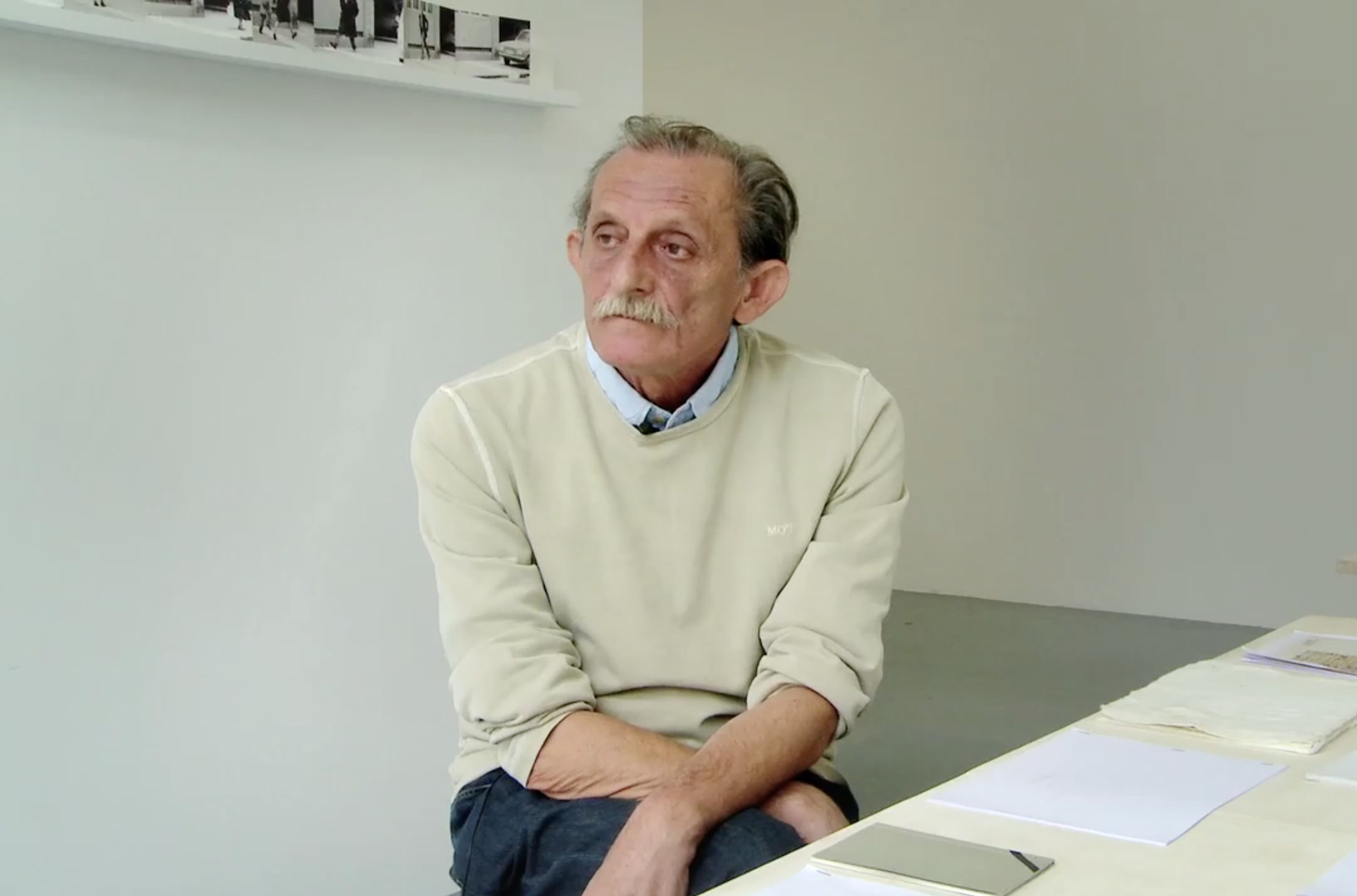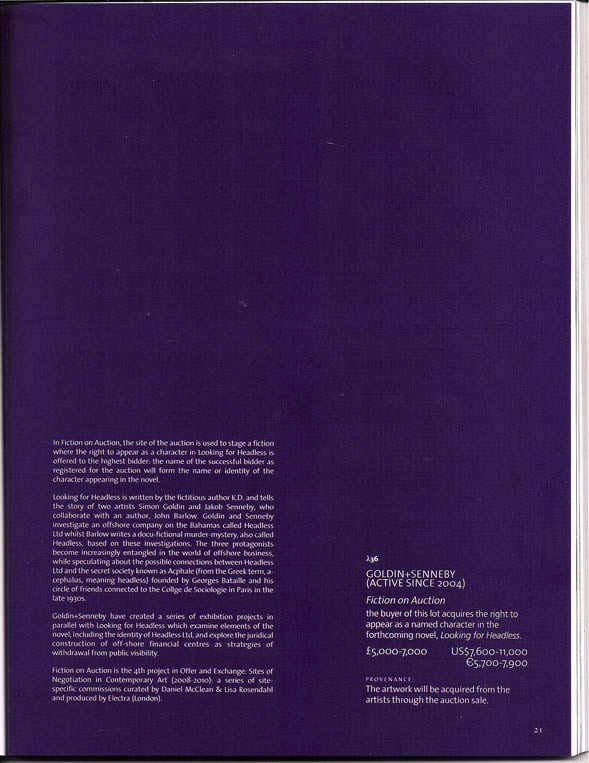
© » KADIST
Laura Lima
Anonymous by Laura Lima consists of a series of fabric-based forms, over which rope has been arranged in varying textures and patterns. Visually, the work evades more complex descriptions, demanding a separate set of conventions to describe its semi-textural, semi-sculptural surface. Lima’s principle of demanding alternative descriptive conventions and exploring the experiential dimension of interacting with her work is fully visible in Anonymous , which is in many ways best qualified, in its sheer variety of shapes and textures, by its title.

© » KADIST
David Haxton
16 films is a selection of David Haxton’s single-screen videos, which he began producing in the 1970s as a continuation of some of the conceptual underpinnings of his earlier film installations. As the described by Haxton, “[he] became interested in in examining the nature of the medium [of film] including light, movement, and the formation of a three-dimensional illusion of space in a flat surface.” This selection of films were produced in 16mm film between 1970 and 1982 and have been digitally mastered in high definition from the original 16mm films, which are preserved by the Academy Film Archive in Los Angeles. Reminiscent of the paired back, low-fi quality of other conceptual video work from that period, Haxton abides to a certain criteria to restrict aspects of the medium: he does not do any editing, always fixes the camera onto a single position for the whole duration of the films, and he limits the actions of the performers.

© » KADIST
H.H. Lim (Hooi Hwa)
Images is a two channel video work addressing the relationship between art and ritual. On the left side, the artist is filmed in a sparse, red room with his tongue nailed onto a red table. With Lim’s freedom of movement and speech limited, the viewer focuses on the facial expressions of the artist as different streams of thoughts and realizations enter his mind.

© » KADIST
Maria Taniguchi
Maria Taniguchi works across several media but is principally known for her long-running series of quasi-abstract paintings featuring a stylized brick wall device. Full of subtle gradations and low-key modulations, these are her trademark: a sustained, reiterative practice, steeped in repetition but carefully attuned to the economies and the sculptural presence of painting. Her approach to painting is conceptual.

© » KADIST
Yin-Ju Chen
Through a semi-fictional approach, Extrastellar Evaluations envisions a version of history in which alien inhabitants, the Lemurians, lived among humans under the guise of various renowned conceptual and minimal artists in the 1960s (Carl Andre, Mel Bochner, and James Turrell to name a few). If humans interpreted and appropriated the geometric-shaped works they created as conceptual and minimalist artworks, the objects were in fact transmission devices the Lemurians used to report back on human actions to their mother planet. The video takes the form of a channeled message from Adama, High Priest and spiritual leader of the Lemurians.

© » KADIST
Mario Garcia Torres
Mario Garcia Torres imagines cinematic devices to replay stories occasionally forgotten by Conceptual art. For him, this is a way of rethinking the tradition in a more personal way, to have a grip on events of recent history and examine them with a curiosity, both critical and sensual. The artist emphasizes the fact that new ideas and meanings may arise from these archaeological narratives.

© » KADIST
Mario Garcia Torres
Mario Garcia Torres discovered the work of artist Oscar Neuestern in an article published in ARTnews in 1969. This article, which is the only trace of his work, is indicative of a lack of interest by Neuestern to leave his name in history; to “defend an artistic activity that has little or no interest to last.” Oscar Neuestern could only remember the previous 24 hours, of which his life and his work are in constant erasure and reconstruction. His practice was “to let things be done with time and the unconscious,” while “not fearing the void.” He looked for the absolute through transparency and symmetry.
Mario Garcia Torres
- location: Mexico City, Mexico
- year born: 1975
- gender: male
- nationality: Mexican
- home town: Monclova, Mexico
Yin-Ju Chen
- year born: 2011
- gender: female
- nationality: American & Taiwanese
H.H. Lim (Hooi Hwa)
H...
David Haxton
Although trained as a painter, David Haxton is known for his exploration of light through the mediums of photography and film...
Laura Lima
Multidisciplinary Brazilian artist Laura Lima’s work attempts to excavate a set of self-defined concepts that she uses to describe her practice, indicative of her overall attempt to unsettle extant conceptual frameworks in favor of more productive re-territorializations...
Maria Taniguchi
Throughout her paintings, sculptures, and videos, Maria Taniguchi unpacks knowledge and experience—connecting material culture, technology, and natural evolution—and investigates space and time, along with social and historical contexts...
-
1970-1979
David Haxton
197016 films is a selection of David Haxton’s single-screen videos, which he began producing in the 1970s as a continuation of some of the conceptual underpinnings of his earlier film installations...
-
2000-2009
H.H. Lim (Hooi Hwa)
2004Images is a two channel video work addressing the relationship between art and ritual...
Mario Garcia Torres
2004Mario Garcia Torres imagines cinematic devices to replay stories occasionally forgotten by Conceptual art...
-
2010-2019
Maria Taniguchi
2015Maria Taniguchi works across several media but is principally known for her long-running series of quasi-abstract paintings featuring a stylized brick wall device...
Yin-Ju Chen
2016Through a semi-fictional approach, Extrastellar Evaluations envisions a version of history in which alien inhabitants, the Lemurians, lived among humans under the guise of various renowned conceptual and minimal artists in the 1960s (Carl Andre, Mel Bochner, and James Turrell to name a few)...
Laura Lima
2017Anonymous by Laura Lima consists of a series of fabric-based forms, over which rope has been arranged in varying textures and patterns...









